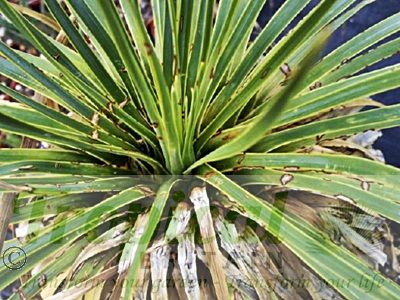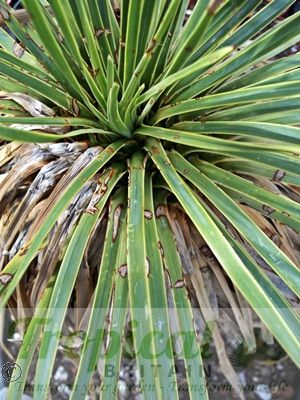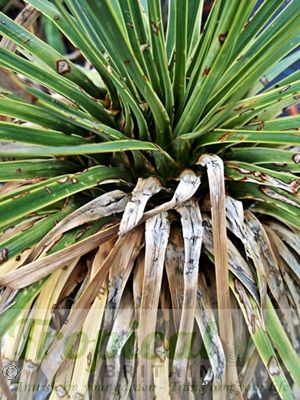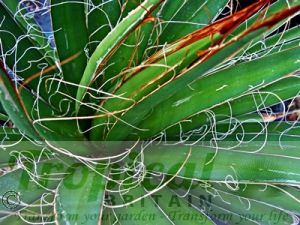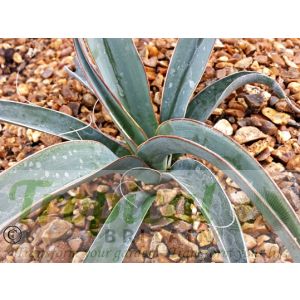Yucca rostrata is a tall, sculptural but relatively slow-growing yucca from Northern Mexico and the Trans-Pecos area of Southern Texas including the Big Bend National Park. It has stiff silvery-blue and very thin leaf-blades arranged in a highly attractive symmetrical rosette with the older leaves forming a dry skirt around the top of the stem.
Like all of the Yuccas that originate from the Chihuahuan Desert, it requires a distinctly alkaline substrate and generous handfuls of rough limestone or dolomite should be added to a very free-draining mix. Shingle, grit, sand and limestone is perfect; to which can be added very small amounts of chalky soil. It does not like an acidic moisture-retentive soil which will inevitably result in root-rot and eventual death. The sunniest position in a raised arid bed is ideal. This is a plant that doesn't need much moisture to keep it growing and in the winter should be kept bone-dry. Recreating the conditions of the Trans-Pecos isn't exactly easy in the UK but if you give it limestone and keep it dry in the winter you are some of the way there. During the summer it thrives on heat. We use a very porous free-draining substrate that dries out again very quickly. You should water your Yucca rostrata very sparingly indeed. Calibrating your cultivation regime to your conditions and your plants is important and always a highly individual requirement. Whatever the conditions of your garden, as autumn approaches slow the watering right down and by mid-October, as the possibility of the first frost draws near, stop watering altogether. Finding inventive ways to keep the bed dry in winter is a useful quality to have for the yucca-mad gardener.
The Trans-Pecos has the highest elevations in Texas and this is a tough and frost-hardy yucca that is very cold-tolerant. It has got something of an underserved reputation as a frustrating and difficult yucca. Unfortunately most of the plants sold in this country are abducted from the desert as large unrooted cuttings. They are airlifted from Mexico to Europe where - having already experienced extreme trauma - they then have to put up with the European climate. Small wonder many of them don't survive. It's a far better option to buy a well-rooted British grown plant like ours that has been raised from seed. If you give it a porous alkaline mix and keep it dry in winter you will have a fabulous architectural plant. Understanding the conditions of the region it comes from is the key to success with this species.
Additional Information
| Order | Asparagales |
|---|---|
| Family | Asparagaceae |
| Sub-Family | Agavoideae |
| Synonyms | Yucca rostrata var. linearis |
| Geographical Origin | Higher Chihuahuan Desert stretching from the north central Mexican states of Chihuahua and Coahuila across the Rio Grande into Brewster County, Texas |
| Cultivation | Full sun, ideally in a raised arid bed, with a virtually soil-less substrate of rough limestone, gravel and sand. Keep dry in winter |
| Eventual Height | 3-4 m |
| Eventual Spread | 1 m |
| Hardiness | Hardy to about -14 C if kept bone-dry in winter |
-
yucca rostrata deliveryreceived 5 yucca rostrata today Tuesday, ordered them Friday, arrived in perfect condition very pleased with them (well rooted) have potted them up will keep in the greenhouse and plant them out in spring. Will certainly order from here again
Posted on

Free DELIVERY
ON ALL ORDERS OVER £99THIS OFFER IS VALID ON ALL OUR STORE ITEMS.

